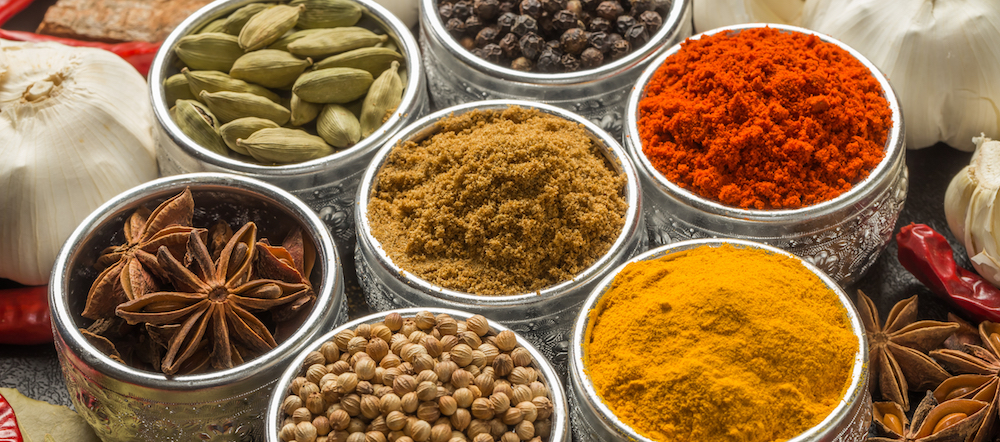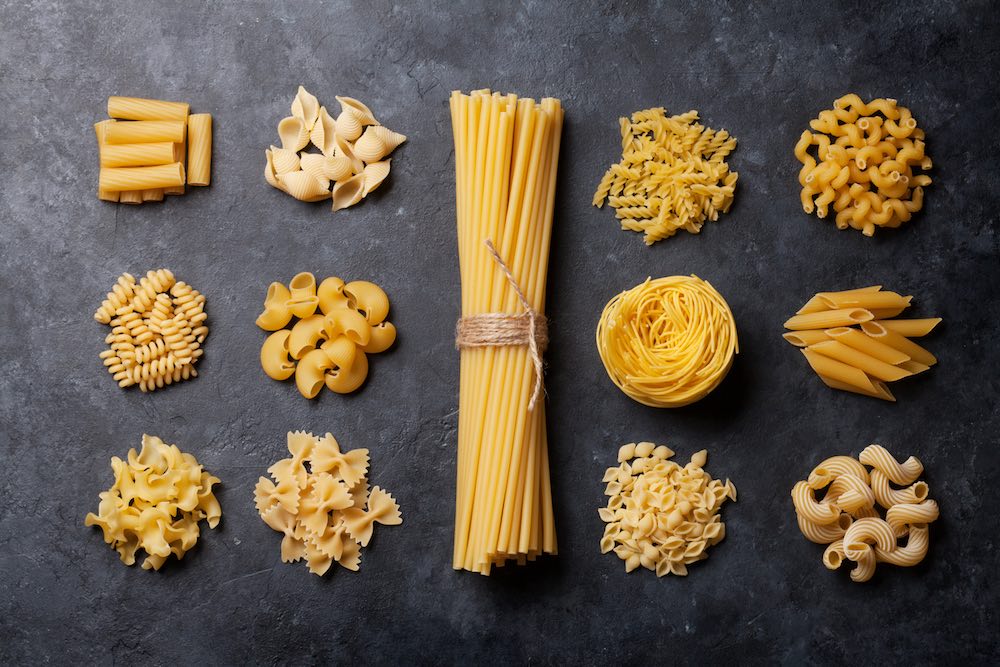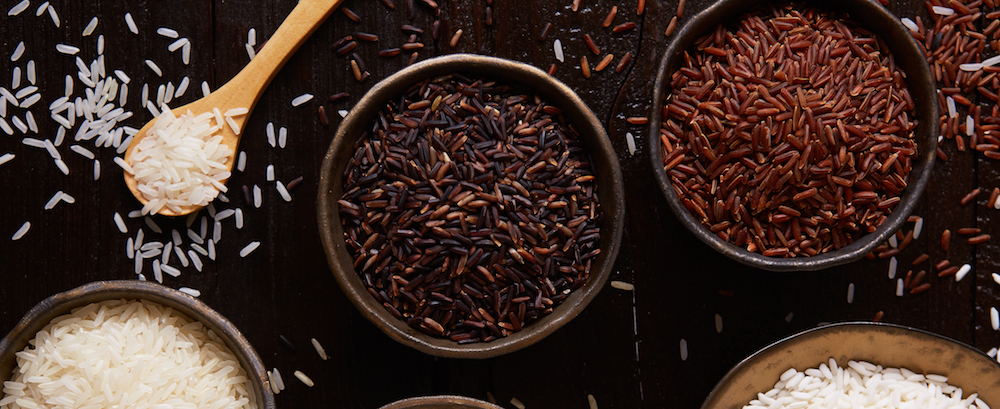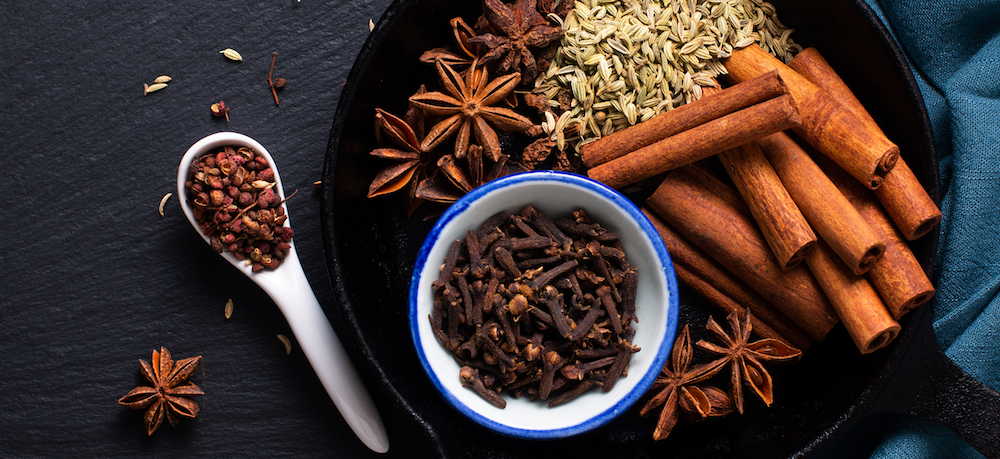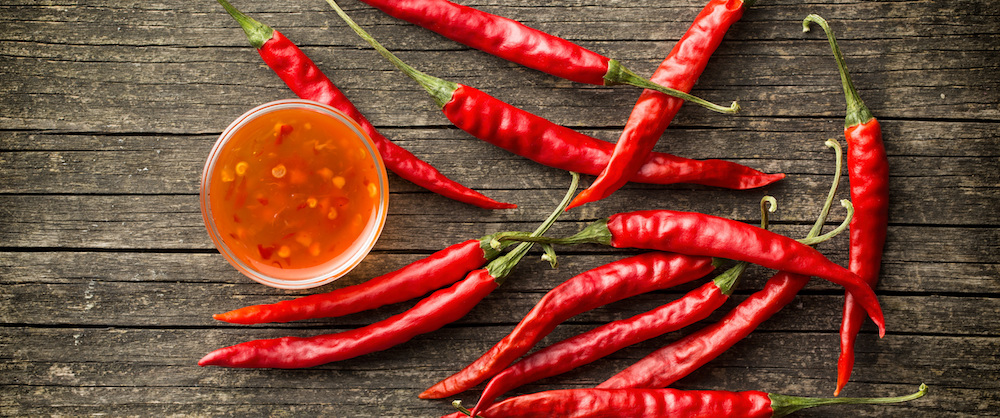Worldwide Kitchen Cupboard Essentials

It’s time to fill your kitchen cupboard with a world of flavour.
There was a time when every kitchen had a cupboard containing those all-important essentials.
- Baked beans – ‘Check!’
- Tin of Tuna – ‘Check!’
- Bag of dried lentils – ‘Check!’
It was probably the last place you’d look if you needed a little culinary inspiration.
But, ‘oh’ how times have changed. Now your humble store cupboard staples can transport your taste buds on a whistle-stop tour of some of the world’s most mouthwatering foodie destinations.
It’s time to fill your kitchen cupboard with a world of flavour.
Indian Cupboard Essentials
Indian cuisine is dedicated to flavour. And the good news – you can make simple, delicious dishes using only a handful of basic ingredients.
Spices and seasoning
Spices – When you think of Indian food, one of the first things that probably springs to mind is spice. But you don’t need to go crazy when stocking your kitchen cupboard. Indian food needs turmeric, so definitely add this earthy ground spice to your shopping list. Just a pinch adds gorgeous colour to many dishes from dals (dried split peas or lentils) to rice. And it’s good for your health too, aiding digestion, whilst also having anti-inflammatory properties. It’s also worth stocking up on green cardamom, coriander and garam masala – one of India’s most famous seasonings that adds a gentle kick and tantalising aroma to curries and other savoury dishes.
Seeds – Cumin seeds are another staple of Indian cooking and curries, which are often roasted to bring out their nutty, perfumed flavour. While mustard seeds (black or yellow) are also found in everything – from rice to stir-fries, chutneys and pastes.
Chilli peppers – It may come as no surprise that India is now the world’s largest producer and exporter of chilli. But they didn’t actually arrive in the country until the 16th century. If you like things hot, then one to try is Bhut Jolokia, also known as ‘ghost pepper’. One of the hottest chillies in the world it has a slow-burning heat, which doesn’t kick in for about 30 seconds. If you can handle it, these chillies do offer an intense fruity, sweet flavour, making them the perfect ingredient for tomato chilli recipes and (very) hot spicy soups. The Kashmiri chilli is used widely in Indian households. It’s renowned for the vibrant deep red colour it adds to dishes and is also a lot less spicy compared to other Indian chillies.
Rice
Rice is a key part of Indian cuisine. So if you want Indian food to feature heavily in your weekly meals, make sure you have a bag or two of basmati in your cupboard. Available in white and wholegrain, it’s fluffy, fragrant, and the perfect side dish for a curry or dal. And it’s also one of the key ingredients in a biryani – a delicious meal that will definitely fill you up.
Canned and dried goods
Beans and lentils – A number of Indian foods are made with lentils. From kichidi (simple rice and lentils) to soups and flatbreads. You can’t visit India without seeing dal (daal, dail or dahl) on a menu. It’s a staple at almost every Indian meal – a vegetarian side dish made of yellow or red lentils and spices. Mung beans are also widely used for both sweet and savoury dishes and can be eaten whole, sprouted or split. You’ll find them in curries and they also pair beautifully with paneer cheese.
Flavour boosters – Many Indian recipes use ghee (clarified butter) at the start or end or cooking. It’s commonly used for frying, roasting or sauteing vegetables or meats, as a topping for roti (flatbread) and can also be melted over steamed vegetables to add flavour instead of using olive oil. Chutneys (particularly Mango, Green and Tamarind) are also frequently used in Indian cuisine – sweet, spicy, chunky or smooth, you’ll find them dolloped on wraps, served with samosas, and with simple roasted meats, like pork and chicken. Raita is another classic Indian side. A creamy, cooling yoghurt, it’s often used to top fiery curries or as a dip for poppadoms, and it only takes five minutes to make using plain yoghurt, cucumber, spices and a pinch of salt. Jaggery (palm sugar) is the main sweetener in Indian cooking, used in desserts, added to soups and to provide balance in savoury stews and spiced sauces.
Flour – If you want to try making your own naan, make sure you buy a bag of chapati flour. Chickpea flour is also frequently used in crepes and pancakes, and in batter for frying.
Italian Cupboard Essentials
Pizza and pasta may be the first things that come to mind when you think of Italian food, but that only scratches the surface. From tuscan-style ribollita soup to the classic ossobuco veal stew, and of course not forgetting one of the most traditional Italian dishes of all, risotto – delicious meals are only a handful of ingredients away.
Spices and seasoning
Punchy herbs, like oregano and basil, give tomato-based dishes an extra shine and are essential to many Italian dishes. And you can never go wrong with having aromatic sage, flat-leaf parsley, or the classic Italian seasoning rosemary in your cupboard. Great for meat, vegan and vegetarian dishes alike! Thyme is one of the main herbs used in Italian cooking. With a subtle minty flavour and sweet but strong scent, it’s the perfect addition to stews, meat and roast potatoes.
Rice and pasta
Rice and pasta are simple staples, but when you think of these two favourite carbohydrates in the context of Italy, you can’t help your mind wander to creamy rich risotto, tomato sauces and aromats, which feature in some of the most delicious Mediterranean dishes like lasagne, tagliatella al ragù, pasta al pomodoro and classic risotto Milanese.
Keeping a bag of dried shells, like tagliatelle or spaghetti, is a cost-cutting and quick way to make a midweek meal. And there’s so much scope to mix things up, depending on the ingredients you have to hand.
Fun fact: although orzo looks like rice, it’s actually a type of pasta – great for soups or salads.
Canned and dried goods
Tomatoes and beans – A definitive staple of Italian cooking, tinned tomatoes (passata, diced, or whole plum) should always have a place in your cupboard. Plus, cannellini beans are fantastic for soups, salads and stews – and they’re filling, too!
Flavour boosters – Good extra virgin olive oil and balsamic vinegar is a must for dipping, drizzling and flavouring. And your secret ingredient to deep, umami flavour for your sauces or pizza is a can of anchovies.
Jars – Jars of pesto, sun-dried tomatoes, roasted peppers, olives and capers are perfect to keep tucked away for a rainy day.
Mexican Cupboard Essentials
Alight with culture, colour and tradition, there’s a reason Mexican cuisine is one of the world’s best-loved. With an exquisite balance of texture and flavours, every meal is a celebration!
Spices and seasoning
Herbs – Thyme, marjoram, Mexican bay and Mexican oregano can be used fresh or dry in a variety of dishes.
Spices – Garlic and onion may be the base of a lot of dishes, but consider keeping ground coriander, chilli powder, cloves, allspice, cumin, cacao and cinnamon at hand.
Chilli peppers – Deserved of their own category, chilli peppers are mostly down to personal preference. Ancho chillies are a great all-rounder for something sweet and smoky with a little bit of heat, fantastic pureed and used in sauces. If you’re looking for a spicier kick, go with the chipotle variety, jalapeño, or habanero. Just be very vigilant when handling.
Rice
Packed with flavour, Mexican rice dishes are simply a must for any chef’s cookbook. Whether that’s arroz rojo of northern Mexico – cooked with chicken stock and tomato – or the simpler white rice of the south.
Canned and dried goods
Beans – Dried or canned beans, like pinto beans and black beans, are super diverse and an absolute staple. Served in a chilli, spooned atop dishes, or just eaten on their own, they don’t just have to be enjoyed fresh. Leftover beans can be turned into soups, refried for tortillas or pureéd into sauces. Pinto beans in particular make delicious refried beans because they’re so buttery, and they also mix-in beautifully with scrambled eggs, soup and rice.
Flavour boosters – Add acidity to your dishes with limes, white apple or fruit vinegars. Enhance taste with salsas and sauces, and add depth to richly spiced dishes with good quality chocolate.
Flour and maize – It’s a great idea to keep tortillas (flour or corn) in the fridge. Or, if you’re a keen cook, you can always make your own with normal flour or masa – if you can find it.
African Cupboard Essentials
From Eritrea to Madagascar, African food is as wonderfully diverse as the continent itself. With the right spices and seasonings, you can transform ordinary dishes into something spectacular.
Spices and seasoning
Spices like green cardamom, grounded cinnamon , whole cloves, nutmeg, allspice berries, turmeric powder, fenugreek seeds, cumin seeds, (and many more) – are easy to come by and not only elevate the taste of your meals, but are full of healthy nutrients too. Adobo is another all-purpose spice mix that can be sprinkled directly onto chicken, beef or pork to give your meat extra ladha – or taste in Swahili. And it’s also mixed into beans, stews and rice, or used as a wet marinade.
Rice
With such a diversity of dishes created across the continent, you can use a huge variety of rice types to suit your tastes, such as Oryza glaberrima, or basmati – whether that’s spicy, fragrant jollof rice, peppery waakye, or tropical coconut rice. An African celebration cannot happen without the presence of Jollof rice – tasty, spicy and quick to prepare, it’s a staple in most households.
Canned and dried goods
Beans and legumes – With so many fantastic vegan and vegetarian dishes to choose from, beans and legumes, like sweet and creamy cow peas or mild and slightly sweet turtle beans (brown beans/black beans), will be your best friends.
Coconut, dried fruits and nuts – From coconut milk and oil, to dates and almonds, these are all key ingredients for sweetness and texture.
Flour and yeast – From golden brown sabaayad to ghee-drizzled canjeero, having flours (like all-purpose, semolina and cornflour) and yeast in the cupboard means tasty dishes are only a bit of prep away.
Spices, oils, stocks and pastes – Excluding spices, you can’t go without shea butter, also known as Women’s Gold in Africa. It plays a fundamental role in cooking and is also used as a multi-purpose oil. While Niter Kibbeh butter is a key ingredient in Ethiopian cuisine. Infused with herbs and spices, this clarified butter is highly versatile. You can melt it over steamed vegetables, use it to baste a roast chicken, or mix it into cooked rice or couscous. If you can find it, it’s also worth buying some tamarind paste – it gives a bit of tartness to sweet or savoury dishes. And you can’t go wrong with bouillon cubes, either.
Chinese Cupboard Essentials
If you’re looking to try your hand at Chinese cooking, you’re in luck, because you don’t actually need that many ingredients to enjoy the authentic sweet, sour and savoury flavours of Chinese cuisine. Let’s get stuck in…
Spices and seasoning
The dry – Chinese five spice is an all-purpose seasoning and is most commonly made from star anise, cloves, cinnamon barks, Sichuan pepper and fennel seeds. It has a warm, savoury, liquorice flavour and a tiny amount goes a long way. It’s often used in braising, as a dry rub for fatty meats like pork and beef, and in marinades. Sichuan peppercorns, which are actually berries, are also frequently used as a seasoning for roast meats and braises, as well as in stir fries and noodles to add an intense aroma.
The fresh – For your fresh ingredients, garlic, ginger and spring onions are the holy trinity of Chinese cooking. They may not technically be store cupboard items, but they’re essential for adding flavour to classic dishes like Cantonese Poached Chicken.
Rice and noodles
Stock them fresh or buy them dried, rice and noodles are a key ingredient for Chinese cooking. Dried egg or vermicelli noodles pair perfectly with chicken and can be picked up in most supermarkets. While fragrant jasmine rice is also perfect for stir-fries or as an accompaniment to meat, fish and vegetables.
Bottles and sauces
Now when it comes to Chinese food, soy sauce is probably the first ingredient most people think of. And if you want to master Chinese cooking, you’ll definitely need two types in your cupboard: light and dark. Light soy sauce is a staple seasoning that’s used to enrich Chinese sauces and marinades and is also commonly used in Chow Mein and stir-fries. Dark soy sauce is more intense in flavour and is typically used in the later stages of cooking to season and colour a dish, giving it a gorgeous caramel colour. Oyster sauce is also commonly used, especially in Cantonese cuisine, to add flavour to a number of meat and vegetable dishes, particularly stir-fries. And it’s definitely worth buying a bottle of hoisin sauce for dipping prawn crackers and spring rolls.
Rice wine – In many parts of China, Shaoxing rice wine is drunk as a beverage, while cheaper varieties are used primarily in marinades and cooked dishes. If you can’t get hold of a bottle, dry sherry is a good substitute.
Oils – The delicious, nutty taste of sesame oil is one of the most distinctive flavours in Chinese cooking. You’ll find it in salad dressings, dips and stir-fries, but go easy – sesame oil can quickly become overpowering if you use too much.
Flour
Cornflour (or cornstarch) is commonly used for thickening stir-fries and braises, and getting extra-crispy coatings on your spring rolls.
Flavour boosters – Dried mushrooms are a must for your store cupboard if you want to master Chinese cuisine. They add umami flavour, texture and richness to almost any dish, including soups, stir-fries and braised dishes. And a little goes a long way, so if stored correctly in an airtight container, they’ll last for months, if not longer.
Thai Cupboard Essentials
Thai cuisine is renowned for its unique and distinct flavours. If you stock your kitchen cupboard with just a handful of different items, you’ll be able to cook a wide variety of authentic Thai dishes at home, from scratch.
Spices and seasoning
The dry – Cumin seeds, white peppercorn, coriander seeds and turmeric powder are all must-haves if you’re looking to master Thai cuisine. White peppercorns are great for seasoning and garnishing many dishes. Coriander seeds are used to add some spice to curry pastes and meat marinades. While turmeric’s distinct smell and bright yellow hue makes it very popular for adding colour to curries and other Indian inspired dishes like Satay and Massaman curry.
The fresh – Garlic, shallots and ginger are widely used in Thai cuisine to enhance the flavour of dishes and give them a little kick. Fresh galangal, a peppery spice closely related to ginger and turmeric powder, is one of the most popular spices in Thai cooking. It’s often pounded or ground into a paste for curries, stir-fries and soups using a mortar and pestle. And it’s also used in cocktails, including the Thai Gin Sour.
Herbs
To make your Thai dishes extra flavoursome, it’s worth stocking a few essential herbs, like lemongrass (a key ingredient in Thai curry paste) and Thai basil.
Chilli peppers
Thailand is known for its spicy food, so it’s no wonder chilli peppers feature heavily. The most commonly used are Bird’s Eye chilli peppers (also known as Prig Kee Nu), which are often dried and ground, and used as a condiment in nearly all Thai households. They’re also added to salads, stir-fries, curries, soups, sauces and marinades. Don’t be fooled by their size – Bird’s Eye chilli peppers may be small, but they pack a real punch, which is why it’s recommended you handle them with gloves. It’s also worth having a handful of red chillies to hand, which are often scattered liberally on the majority of Thai dishes.
Rice and noodles
Both fresh and dried noodles feature heavily in Thai cuisine for noodle soups and the famous Pad Thai. There are a number of different varieties to choose from, but the wider types are typically used for stir-fries, while thinner types, often called vermicelli rice noodles, are popular in many soup dishes. You’ll also need two types of rice for Thai cooking: sticky rice and Jasmine rice. Sticky (or sweet rice) works well with Thai red curries, green curries and stir-fries. While Jasmine rice is used in biryanis and to infuse a slightly perfumed flavour into dishes.
Bottles and sauces
Like Chinese cuisine stir-fries and noodles heavily feature soy sauce and oyster sauce. And fish sauce (Nam Pla), has a well-earned place in nearly every Thai household. Containing only anchovies, salt and water, it’s used to season a variety of dishes including salads, curries, soups, stir-fries, tomato sauces and marinades. Rice vinegar, with its refreshing, tart flavour is also used for adding sourness to dressings, rice and salads. And it’s also worth buying a bottle of Sriracha, a sweet spicy sauce that’s commonly used as a dip, particularly for seafood and spring rolls.
Flavour boosters – Coconut milk is great for adding creamy texture and balances the heat in Thai curries and soups. While coconut cream is popular for desserts. Both are available to buy as cartons or cans.
Flour and starches
Rice flour (ground from long-grain rice), glutinous rice flour (ground from sticky rice) and tapioca starch are most commonly used as thickeners in Thai cooking. So it’s good to have a couple of bags in the cupboard.
Indonesian Cupboard Essentials
You’ll find the ingredients in Indonesian cooking similar to Indian and Thai. But to make sure you’re covered, here are some key items to make sure you have in your store cupboard.
Spices and seasoning
Turmeric, cumin, cinnamon and coriander are some of the most used spices in Indonesian cooking, to add flavour and heat.
Herbs
Lemongrass and galangal are often used whole in a variety of slow-cooked dishes during cooking, but always removed before serving.
Nuts
Peanuts (known as kacang) are used liberally in Indonesian cooking to add texture, and are the main ingredient in peanut sauces to accompany rice dishes. They’re also added to salads and served as a side.
Chillies
If you’re going to make Sambal, you’re going to need chillies. It’s a chilli sauce with dried-shrimp paste and is one of the most popular condiments in Indonesian cuisine for vegetables, chicken and fish, and it can also be added to soups, noodles, stews, rice, and even eggs. There are around 300 different varieties of Sambal, ranging from mild to very hot.
Rice and noodles
Rice features heavily in Indonesian cuisine, so make sure you have a bag of basmati or Jasmine rice in the cupboard. And if you’re stocking up on noodles, egg noodles are your best bet. Bottles and sauces
If you want to stock up on a bottle of two, light soy sauce is frequently used as a seasoning and dark as a dipping sauce in Indonesian cuisine. Fish sauce is also used to give savoury dishes an umami flavour.
Flavour boosters – Indonesian palm sugar tastes of molasses and caramel, and like Jaggery (the Indian equivalent), it’s used to make desserts and balance flavour in savoury dishes. There are two types: gula jawa (Javanese sugar) and gula merah (red sugar). Coconut milk is also widely used to make pastes and sauces, and features heavily in a number of meat dishes and curries. You’ll also find it in popular sweets like bubur pulot hitam, a black sticky rice dessert that’s incredibly rich and creamy.
Flour
Indonesians use a number of different flours for making desserts and savoury doughs, but like in Thai cuisine, the most commonly used is rice flour. It’s used to make the popular snack, rempeyek (or peyek for short), a delicious deep-fried Indonesian cracker.
A culinary adventure
While this is just a selection of the incredible cuisines to explore, your adventure starts with you! Follow a recipe you love the sound of, or just play around with some flavours for a surprising end result. We have a number of delicious Tilda rice recipes from around the world that you can try. Just pick the cuisine you fancy and start cooking. Great food is an experience shared worldwide, so let’s celebrate it!
